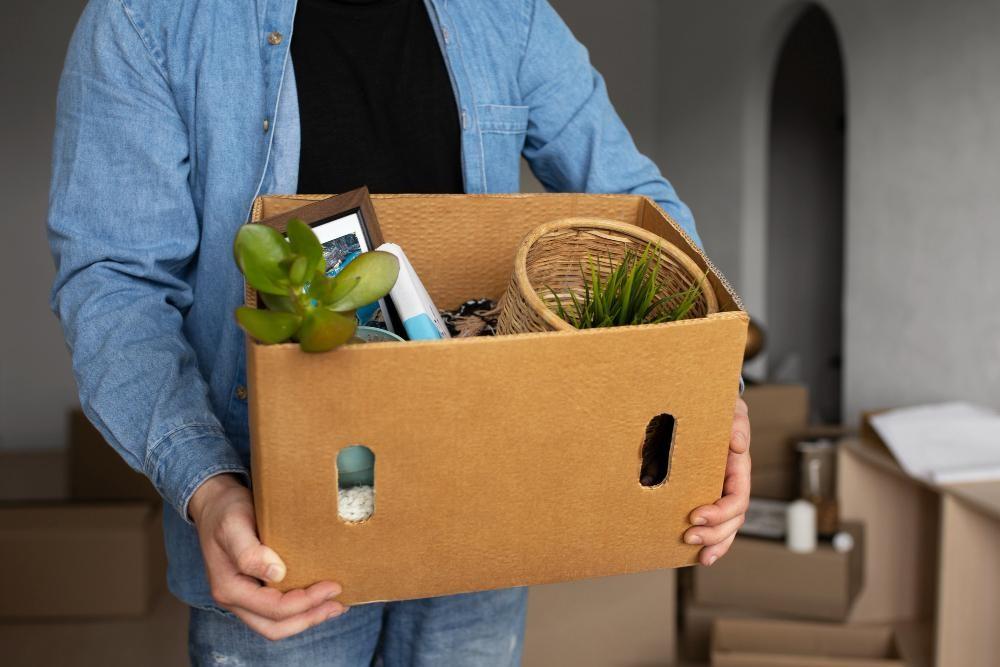
4 minute read
Eco-Friendly Storage Practices for Home Relocation
Image via: Freepik
In the age of eco-conscious living, even home relocation can align with sustainable practices. This article explores how to make your move more environmentally friendly by adopting ecoconscious storage solutions. From choosing green packing materials to exploring environmentally responsible storage options, discover practical steps to minimize your ecological footprint during the often chaotic process of moving.
Whether transitioning goods to a storage facility temporarily or directly into a new home, adopting sustainable storage practices aligns with global environmental concerns and contributes to personal well-being. You can actively reduce your ecological footprint and minimize the environmental impact of traditional storage practices by prioritizing using recyclable and biodegradable packing materials. Employing energy-efficient storage facilities equipped with advanced climate control systems ensures the preservation of belongings while minimizing resource consumption. Furthermore, the promotion of reusable packing containers and mindful organization within storage spaces fosters sustainability and facilitates efficient retrieval, diminishing unnecessary waste.
In essence, integrating eco-friendly storage practices not only benefits the environment but also promotes responsible and conscious living, creating a harmonious balance between personal needs and environmental stewardship. Here are eight impactful changes contributing to a more sustainable future while ensuring a smooth transition to your new home.
10 Changes Contributing to a More Sustainable Future
1. Mindful Downsizing:
The first step towards an eco-friendly move is adopting a mindful downsizing approach. Before packing, assess your belongings and consider donating, selling, or recycling items you no longer need. This reduces the number of items you need to move and ensures that unwanted possessions find new homes instead of ending up in landfills.
2. Mindful Organization:
Organize your storage to maximize space efficiency and minimize the need for additional containers. Mindful organization reduces the environmental impact and makes it easier to find and retrieve items when needed.
3. Reusable Packing Materials:
Say goodbye to single-use plastics and opt for reusable packing materials. Invest in sturdy containers, bins, and eco-friendly padding alternatives. Replace bubble wrap with clothing, towels, or blankets to protect fragile items. Not only does this cut down on waste, but it also saves you money and makes moving items more useful.
4. Renting Plastic Moving Boxes:
Consider renting plastic moving boxes instead of using traditional cardboard boxes. Plastic boxes are durable, reusable, and often made from recycled materials. Companies specializing in this service provide a convenient and environmentally friendly alternative to the traditional packing box.
5. Biodegradable Packing Peanuts:
For those who require additional padding, opt for biodegradable packing peanuts made from starch. Unlike their Styrofoam counterparts, these peanuts dissolve in water and pose no harm to the environment. They offer the same protective benefits without the lasting environmental impact.
6. Green Moving Companies:
Choose a moving company with a commitment to sustainability. Many companies today are adopting eco-friendly practices, such as using biodiesel fuel for their trucks or implementing efficient routing to reduce carbon emissions. Research and select a company aligned with your environmental values.
7. Donate Unwanted Items:
Avoid overloading your new home or storage unit with unwanted items, and consider donating your no longer-needed things to local charities or organizations. Many communities have initiatives to collect gently used furniture, clothing, and household items to distribute to needy people. Giving items away not only reduces waste but also supports community well-being.
8. Digital Documentation:
Minimize paper usage by digitizing your important documents. Scan paperwork, receipts, and files to store them electronically. This reduces the need for excessive paper storage and makes organizing and accessing essential information during and after the move easier.
9. Eco-Friendly Labels for Informed Choices:
Look for eco-friendly labels and certifications when selecting storage products and facilities. These indicators help guide you toward making conscious choices, aligning your relocation journey with a commitment to environmental responsibility.
10. Energy-Efficient Storage Facilities:
The wonders of eco-friendly storage practices extend to the facilities themselves. Choose storage spaces equipped with energy-efficient systems and climate control. Not only does this ensure the preservation of your items, but it also reflects a commitment to reducing energy consumption and fostering sustainable practices.
Greener Moving = Greener Living
Moving to a new home is a transformative journey, and as you embark on this adventure, your choices can have a lasting impact on the environment. Embracing eco-friendly storage practices during home relocation is not just a responsible choice; it can enhance the entire moving experience. From reducing waste to minimizing your carbon footprint, adopting sustainable storage practices is a powerful way to contribute to a greener, more eco-conscious lifestyle.
As you navigate the process of home relocation, be a steward of the environment by embracing eco-friendly storage practices. Adopting eco-friendly storage practices for your home relocation simplifies the move and aligns with a conscious, sustainable lifestyle. By choosing green materials and responsible storage solutions, you contribute to a healthier planet and set a precedent for mindful living. As you settle into your new home, let your eco-friendly choices resonate, shaping a greener future for generations ahead.

